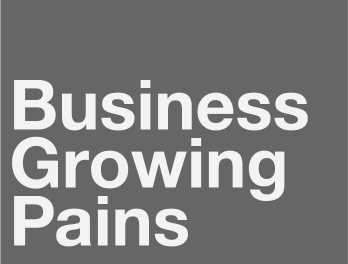Medium Enterprises

Dr Peter Ellis
At each size, once an entrepreneur reached the limit of their personal business management abilities or passed the boundary of their understanding of how a business of that size worked, they struggled to be able to comprehend how to transition to a larger enterprise. Without incorporating the required knowledge, they do not understand how an enterprise of that size works, or the management capability skills which are needed to manage an enterprise of that size. The problem is that they had not only passed the limit of their business knowledge but were unaware of a boundary, beyond which they had never speculated. Indeed, until they began to take on new knowledge, many were not aware that there was any further business knowledge to acquire.


A medium-sized enterprise is defined as an enterprise having structured, individual managed departments, within a specified hierarchy.
When growing, enterprises do not simply change from one size to the next, but transitioned at a pace that the owner-manager is able to perceive, understand, action and manage. It is also the case that entrepreneurs may or may not complete a particular transition, or fully understand the activities required to participate at each stage.
Changes may be caused by new technology or organisational growth, and there are different stages through which they occur within organisations. Definitions of enterprise size are not simply three levels of micro, small and medium size. They are the result of activities which indicate that a growing organisation has several transitional stages. In addition, the lack of fluidity and necessity to change the entrepreneurial mindset that occurs when moving into each stage can delay or prevent further growth. Each of these stages have particular characteristics of their own that are explained in this article.
The first thing that identifies the difference between a medium and micro or small enterprise, is where the core direction is moved to the body (or departments of the business) as opposed to the head (or sole decision making of the owner-manager). That is, micro and small enterprises were focussed on short term results resulting from the owner-manager’s personal decisions, whilst the medium-sized enterprise must have a longer-term view due to its structure. The owner-managers of medium-sized enterprises, like micro and small ones, still have overall control of the enterprise and possess the positive attributes of an entrepreneur. However, they must also incorporate additional management activities within the enterprise, working with a departmental rather than a single unit structure.
Once the enterprise has grown to a certain stage, it is not possible for all staff and activities to be personally managed and controlled adequately by the owner-manager alone. Therefore, to be able to manage a larger organisation, it must be divided into controllable subdivisions or departments that have a manager or supervisor. Organisational structures such as departments and managerial hierarchies were not required for standard micro or small enterprises and were therefore unique within a private sector organisation to the medium-sized enterprise stage. For an organisation to be structured fully as a medium-sized enterprise, a functional arrangement is employed whereby each department is managed within a specified hierarchy. This architectural shift is paramount for the medium-sized private sector organisation to remain viable and provide a foundation for growth. If the enterprise does not conduct this restructure and maintain the organisational attributes found within the micro and small enterprises, then the firm is still transitioning and managing the progressive development is significantly more stressful and difficult to control.
A medium-sized enterprise is defined as an enterprise having structured, individual managed departments, within a specified hierarchy. For this size of entity, the owner-manager is removed from routine business activities, shifting their focus through processes and procedures to the overall supervision of the company through department managers, or working with a general manager. Moreover, in this structure the owner-manager does not communicate directly with all employees in the same manner as in the micro and small enterprise stage; rather, they adopt a more procedural approach to effectively manage their staff through a management hierarchy.
Department leaders were motivated to achieve goals through processes and procedures and were empowered to contribute feedback for the benefit of the overall enterprise. The owner-manager plans for long term development and controls past, present and future activities through KPIs. In general, the enterprise is no longer one of pure support but has an identity and brand of its own.
A medium-sized enterprise owner, when starting their enterprise as a micro enterprise, initially acts in the same manner as all micro enterprise owners regarding work and cash flow maintenance. However, as with the small owner-manager, the owner-manager who grew to a medium size, moved out of the micro-environment to a small one quickly, through bypassing or shortening the step from leaving the micro environment to commencing the small enterprise environment. The medium enterprise owner-managers generally use their commercial knowledge and experience to develop their business accordingly. To do this, they add to their technical abilities and their management skills by finding a mentor, taking management courses or reading management books to transition towards the characteristics of a small enterprise.
Transitioning into a medium enterprise is not a simple decision or activity. To date, only 2.4% of private sector organisations manage this development. Whilst 16% of small enterprise owner-managers try to grow out of a small enterprise, only a small number succeed. Every entrepreneur that has successfully transitioned, had to learn new business approaches and skills.
Over half of enterprises currently identifying as medium in size, are still in a transitional situation, where they need to learn or put in place new management requirements such as having each department managed either by a general manager or separate departmental managers, planning future marketing and organising the cash flow.

Successfully transitioning into a medium-sized enterprise appears to be a result of developing several new personal abilities, learning new competencies and employing departmental managers or a general manager to perform more advanced organisational activities. It has been found that a third of enterprises identifying as medium in size, are in fact in the transitional phase and are struggling to manage the organisation, due to either a lack of understanding the required personal abilities or not knowing what to do or how to put in place the organisational activities. Some of the enterprises remain between the small and medium stage for several years. The reason is mainly because they have not learned what they were supposed to do and were therefore unable to make the final transition.
Owner-managers of enterprises do not all find the transition easy. Those struggling to transition into a medium-sized enterprise may have separate departments in their organisation, however some have not organised the management of these departments as an integrated part of the whole organisation. Some have not developed written company documents such as a working business plan or processes and procedures manual for each department. Others had not prepared focussed key performance indicators. Some owner-managers trying to transition, find it difficult to change their management style and put excessive obstacles in their own paths by overruling managers and continuing to micromanage, thus making their growth more difficult. Where the owner-manager is also the general manager, it is harder to focus on the areas of future direction and cash flow management. Until all the medium-sized enterprise characteristics are in place, they remain in the transitional phase between a small and medium-sized enterprise.
Those entrepreneurs who have incorporated all the requirements of becoming a medium enterprise, do so at different speeds to each other to reach that stage. They take anything from two to twenty-five years to fully establish all the elements. That depends on whether they employ a mentor, have had previous experience or simply choose to develop the enterprise themselves. This will significantly affect the time they take to develop their ability to perceive, understand and implement the required elements. However, all firms that are fully at the medium stage have achieved every characteristic.

Dr Peter Ellis
YSP.com.au
Related Articles
Classifying business size
Business Size: Definition, Importance, and Classification Introduction At BGP, we aim to provide you with comprehensive knowledge and insights into various aspects of economics and management. In this article, we delve into the concept of business size. Understanding...
TOP 10 CAUSES OF BUSINESS GROWING PAINS
TOP 10 CAUSES OF BUSINESS GROWING PAINS 1. Lack of Product Market Fit - Product market fit is the relationship between your products and services and your market. It is the gauge the venture capitalists look at a prospective investment to see whether it has identified...
What is Product Market Fit & Why is it so Important?
creating a business strategy for your online business or bricks & mortar business should be similar evaluate plan and engage with experts. They can point out the holes in your strategy allowing you the room to develop it further.

Follow Us
Subscribe For Updates & Offers
Lorem ipsum dolor sit amet, consectetur adipiscing elit. Aenean scelerisque suscipit condimentum. Vestibulum in scelerisque eros. Fusce sed massa vel sem commodo.
